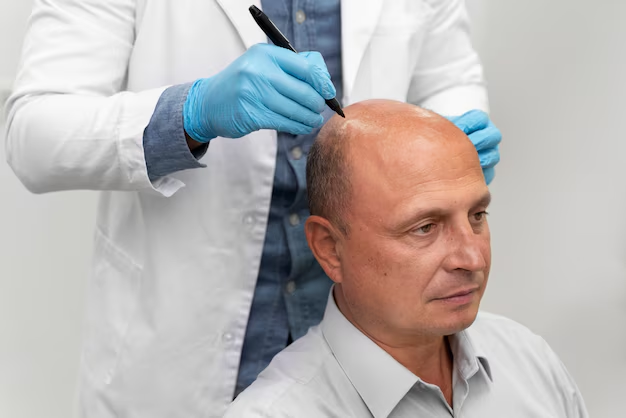Hair loss is a common concern that affects millions of people worldwide, impacting not only their physical appearance but also their self-esteem and confidence. While there are various treatments available for hair loss, one option that has gained popularity in recent years is hair transplant surgery. In this comprehensive guide, we will delve into the world of hair transplant, exploring its procedure, benefits, risks, and what to expect before and after the surgery.
What is Hair Transplant?
Hair transplant is a surgical procedure that involves moving hair follicles from one part of the body, typically the back or sides of the scalp (donor area), to the balding or thinning areas (recipient area). The most common type of hair transplant is known as Follicular Unit Transplantation (FUT) or Follicular Unit Extraction (FUE).
FUT involves removing a strip of scalp from the donor area and extracting individual hair follicles from it, which are then transplanted to the recipient area. On the other hand, FUE involves harvesting individual hair follicles directly from the donor area without the need for a strip of scalp.
Benefits of Hair Transplant
Hair transplant surgery offers numerous benefits for individuals dealing with hair loss. Some of the key advantages include:
Natural-looking Results
One of the primary benefits of hair transplant is that it provides natural-looking results. The transplanted hair blends seamlessly with the existing hair, creating a fuller and more aesthetically pleasing appearance.
Permanent Solution
Unlike temporary hair loss treatments such as medications or topical solutions, a hair transplant offers a permanent solution to hair loss. Once the transplanted hair follicles take root, they continue to grow like natural hair.
Boosted Confidence
Hair loss can have a significant impact on self-esteem and confidence. By restoring a full head of hair, individuals often experience a boost in their self-confidence and overall quality of life.
Low Maintenance
Transplanted hair requires minimal maintenance, similar to natural hair. Individuals can style, cut, and care for their transplanted hair as they would with their original hair.
Risks and Considerations
While hair transplant surgery is generally safe and effective, there are certain risks and considerations to keep in mind:
Scarring
Both FUT and FUE procedures can result in scarring, particularly in the donor area. However, advancements in surgical techniques have minimized visible scarring, making it less of a concern for many individuals.
Infection
As with any surgical procedure, there is a risk of infection following a hair transplant. It is essential to follow post-operative care instructions provided by your surgeon to minimize the risk of infection.
Inconsistent Results
While most individuals achieve successful outcomes with hair transplant, there is a possibility of inconsistent results, such as uneven hair growth or unnatural-looking hairlines. Choosing a skilled and experienced surgeon can help mitigate this risk.
Cost
Hair transplant surgery can be costly, with prices varying depending on the extent of the procedure and the clinic or surgeon’s reputation. It is essential to consider the financial implications of hair transplant and explore financing options if needed.
Preparing for Hair Transplant Surgery
Before undergoing a hair transplant procedure, there are several steps to take to ensure a successful outcome:
Consultation
Schedule a consultation with a qualified hair transplant surgeon to discuss your goals, expectations, and medical history. The surgeon will evaluate your hair loss pattern and determine the most suitable treatment plan for you.
Lifestyle Changes
Leading up to the surgery, it is advisable to maintain a healthy lifestyle, including a balanced diet, regular exercise, and avoiding smoking and excessive alcohol consumption. These lifestyle choices can promote optimal healing and recovery post-surgery.
Medication Review
Inform your surgeon about any medications or supplements you are currently taking, as some medications may need to be adjusted or discontinued before the surgery to reduce the risk of complications.
Post-Operative Care and Recovery
After the hair transplant surgery, proper post-operative care is crucial for optimal results and a smooth recovery process:
Follow Surgeon’s Instructions
Adhere to the post-operative instructions provided by your surgeon, including how to care for the transplanted area, when to wash your hair, and any prescribed medications to promote healing.
Avoid Strenuous Activities
Avoid strenuous activities, such as heavy lifting or intense exercise, for a few weeks following the surgery to prevent dislodging the newly transplanted hair follicles.
Be Patient
Hair transplant results take time to become fully visible. It is normal to experience shedding of the transplanted hair in the weeks following the surgery before new hair growth begins. Patience is key during the recovery period.
Conclusion
Hair transplant surgery is a viable option for individuals seeking a permanent solution to hair loss. By understanding the procedure, benefits, risks, and post-operative care involved, individuals can make informed decisions about undergoing hair transplant surgery. Consultation with a qualified surgeon, thorough preparation, and diligent post-operative care are essential steps towards achieving natural-looking and satisfying results. Embracing the transformative power of hair transplant can lead to renewed self-confidence and a positive outlook on life.




